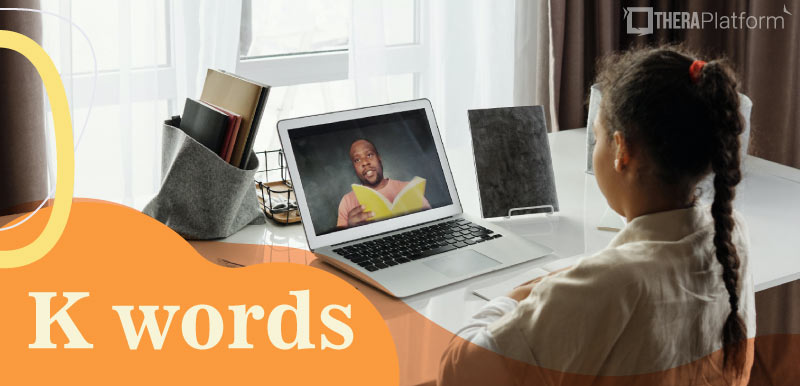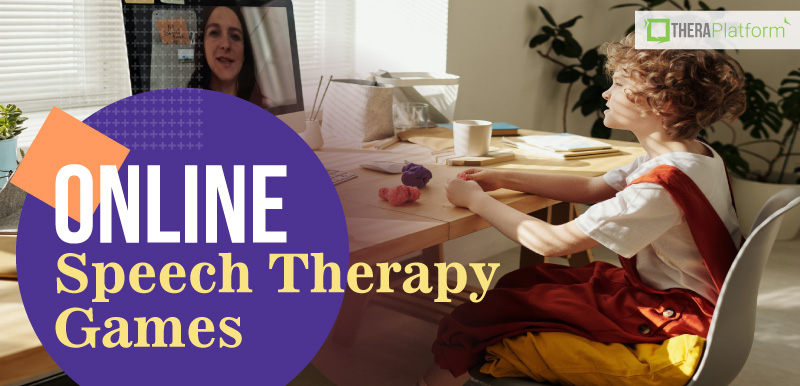Sh words

Sh words like “shhhh” may be easy for children to understand but difficult to say as they have difficulty articulating the /sh/ sound.
According to the American Speech-Language Hearing Association (ASHA), a child may be able to produce the /sh/ sound by age 3 1/2. By age 7, 90% of children can produce the /sh/ sound.
One common error children with speech sound disorders may make when attempting to produce the /sh/ sound is to apply the phonological process of alveolarization.
Alveolarization occurs when a child substitutes an affricate sound with an alveolar sound.
Here are some examples:
- The client says “tu” for the word shoe
- The client says “toe” for the word show
This phonological process is typically eliminated by age 5 years. Another common phonological process children apply when attempting the /sh/ sound or articulating /sh/ words is fronting.
Fronting of the /sh/ sound occurs when the child makes the sound in the front of the mouth (as a /s/) instead of the back of the mouth.
For example:
- “Sop” for shop
- “Sue” for shoe
The phonological process of fronting typically disappears by age 3.5 years, according to developmental norms.
When children have an articulation disorder that includes difficulty saying /sh/ words, it can cause their speech to be hard for others to understand. According to recent research, a child’s speech should be 75% intelligible to others by age 5.
Are you working with a client who is struggling to make the /sh/ sound, and it’s affecting their speech intelligibility?
Here are some of the most effective and engaging activities for improving articulation of the /sh/ sound. A /sh/ word list organized in order of complexity and /sh/ word position are also available to guide your therapy sessions as you target the complex /sh/ sound.

Download our Ultimate Articulation Guide

Exercise #1: Placement Cues for “The Quiet Sound”
Giving your client associations to make for their target sound in Speech Therapy sessions can be helpful. Associations, like calling /sh/ “the quiet sound” can help children stay on track with remembering what sound they’re working on and what it should sound like.
Try starting with this.
- Although the /sh/ sound can be tricky for children to visualize, most children can easily make the association of rounding their lips and putting one finger in front of their mouth as they say “sh”.
- Then, give some specific placement cues to help your client figure out where to put the other muscles in their mouth and how to make the /sh/ sound.
- Remind your client to round their lips (similar to making the “o” sound).
- Ask the child to keep their tongue back/in their mouth.
- Remember, the tongue shouldn’t be making contact on the top of the mouth with the alveolar ridge or be directly behind the bottom teeth - right in the middle is perfect.
- Keep the voice off.
- Blow air through the center of the mouth.
Voila! Following these placement cues should help your client produce the /sh/ sound in isolation.
Additional cues that can help:
- Visual cues (put a mirror in front of the client).
- Model how to make the sound accurately.
- Tell your client that if they put their finger in front of their mouth, they should feel air on it when making the /sh/ sound.
Exercise #2: Shape from the /s/ Sound
Can your client produce the /s/ sound accurately? If so, try helping the child shape this sound into the /sh/ sound.
The /s/ sound has similar oral motor placement as the /sh/ sound. The mouth is slightly opened, the tongue is placed in the middle of the mouth, and a stream of air is produced through the mouth with the voice off.
Start by asking the child to produce the /s/ sound. Then explain that to make the /sh/ sound, they should:
Round the lip and slide the tongue slightly farther back in the mouth, so a prolonged /ssssss/ can turn into a /shhhh/ when making these slight changes in placement or the articulators.
Visuals like a mouth puppet or mirror can be helpful to provide visual feedback to the child on how to move their mouth muscles. Kokolingo, a digital platform for articulation therapy, includes a Make-a-Sound activity where the child can watch videos of a pirate providing different types of cues for producing the /sh/ sound before imitating it themselves.
If you like to use apps in speech therapy, Virtual Speech Center has developed over 40 apps for speech, language and cognition and seven of them target articulation.
Exercise #3: Bring out the Books to articulate /sh/ words
Books are a fun, functional way to work on a child’s articulation of speech sounds. Read a book that contains frequent repetitions of /sh/ words.
Bring the child’s awareness to your mouth as you model how to make the /sh/ sound while reading the book. Once the child is able to make the sound in isolation, try seeing if he or she can carry it over to syllables and /sh/ words.
Here are some favorite kids books that provide frequent opportunities for the child to practice /sh/ words:
- Mrs. Wishy-Washy’s Farm by Joy Cowley
- Sheep on a Ship by Nancy Shaw
- Sheep in a Jeep by Nancy Shaw
- Shoo Fly By Iza Trapani
Start 30-day Free Trial and explore TheraPlatform. HIPAA Compliant Video and Practice Management Software for Therapists.
Exercise #4: Sing Songs to Practice /sh/ words
/Sh/ words are in many favorite, fun kids songs. Once your client is able to produce the /sh/ sound in isolation and syllables, try progressing to single /sh/ words.
Mix things up with a dance party in your therapy session, and listen to some of these great songs that are filled with the /sh/ sound:
- Shake Your Sillies Out
- Baby Shark
- Baa Baa Black Sheep
- Head, Shoulders, Knees and Toes
- Open, Shut Them
- She’ll Be Comin’ Round the Mountain
Once your client knows the words to some of the songs, try pausing and waiting for them to fill in the blank with a /sh/ word from the song that contains their target sound.
Word Lists for /sh/
Initial Position
1-Syllable
Shoe | Sheep | Ship | Share | Chef |
Shake | Sheet | Shave | Shape | Shirt |
Shade | Shorts | Shot | Sharp | She |
Shed | Shin | Shine | Shop | Shore |
Shut | Shy | Show |
Multisyllabic
Shampoo | Shadow | Sharpener | Shoulder | Shower |
Sugar | Shiny | Sharing |
Medial Position
Mushrooms | Seashells | Trash | Can | Lampshade | Spaceship |
Flashlight | Washer | Marshmallow | Cashier | Fishbowl | Tissue |
Horseshoe | Brushes | Fishing | Delicious | Lotion | Magician |
Parachute | Ocean |
Final Position
1-Syllable
Fish | Leash | Rash | Wash | Wish | Trash |
Squash | Splash | Squish | Crush | Dish | Brush |
Blush | Push |
Multisyllabic
Nail | Polish | Finish | Mustache | Toothbrush | Eyelash |
Crawfish | Starfish | Ticklish | Licorice | Vanish | Car wash |
Resources
SLPs working with individuals who have an articulation disorder or phonological disorder with pronouncing /sh/ words can utilize TheraPlatform for helpful resources. In its Pro Plus plan, TheraPlatform provides an exclusive suite of games and apps that can be used for both teletherapy and in-person speech therapy to help SLPs save time on session preparation and keep clients engaged.
If you own a private practice or are considering starting a private practice, you can use TheraPlatform to manage several aspects of your practice from scheduling to claims. TheraPlatform, an all-in-one EHR, practice management and teletherapy tool was built for therapists to help them save time on admin tasks. Consider starting with a free trial of TheraPlatform today.
More resources
- Z words
- P words
- Online speech therapy games
- Cluttering speech explained
- Therapy resources and worksheets
- Therapy private practice courses
- Ultimate teletherapy ebook
- The Ultimate Insurance Billing Guide for Therapists
- The Ultimate Guide to Starting a Private Therapy Practice




